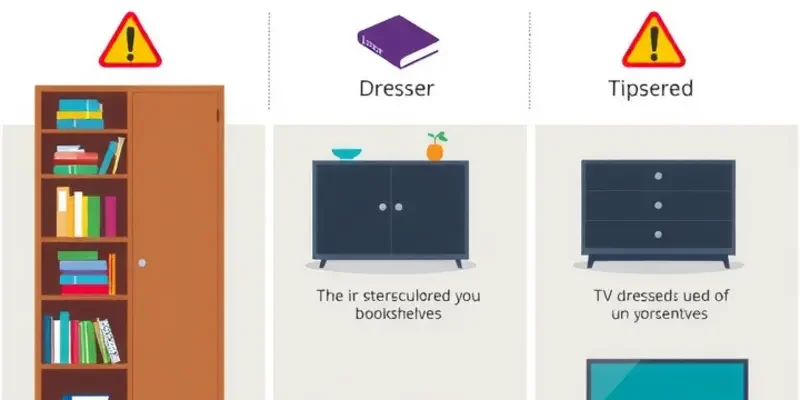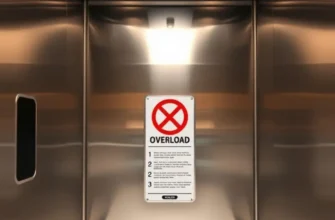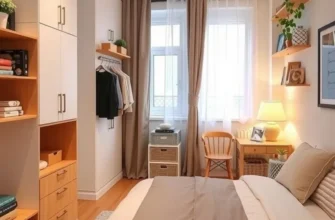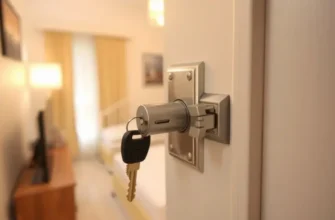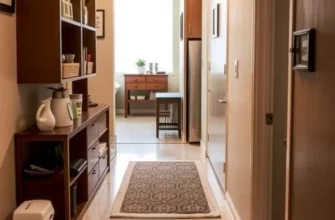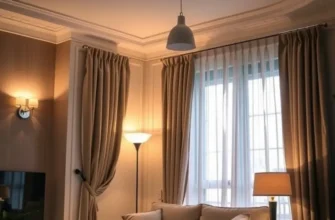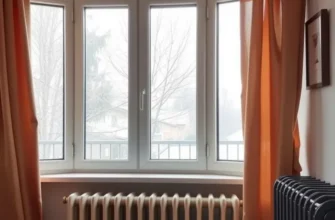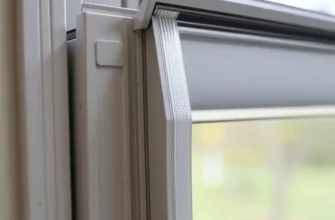Keeping your apartment safe and secure should be a top priority, particularly when it comes to preventing furniture from tipping over. Many renters overlook the importance of stabilizing their furniture, which can lead to injuries or property damage. Thankfully, a few simple strategies can help you embrace a safer living environment. From anchoring tall furniture to choosing weighted options, these practices are key in reducing the risk of accidents in your home, especially in households with children or pets. Let’s explore practical, easy-to-implement solutions that not only enhance your apartment’s safety but also provide peace of mind, allowing you to focus on enjoyment rather than worry. With a little diligence, it’s possible to create a safe haven that meets your lifestyle needs while maintaining an inviting atmosphere for guests.
Understanding the Risks of Tipping Furniture
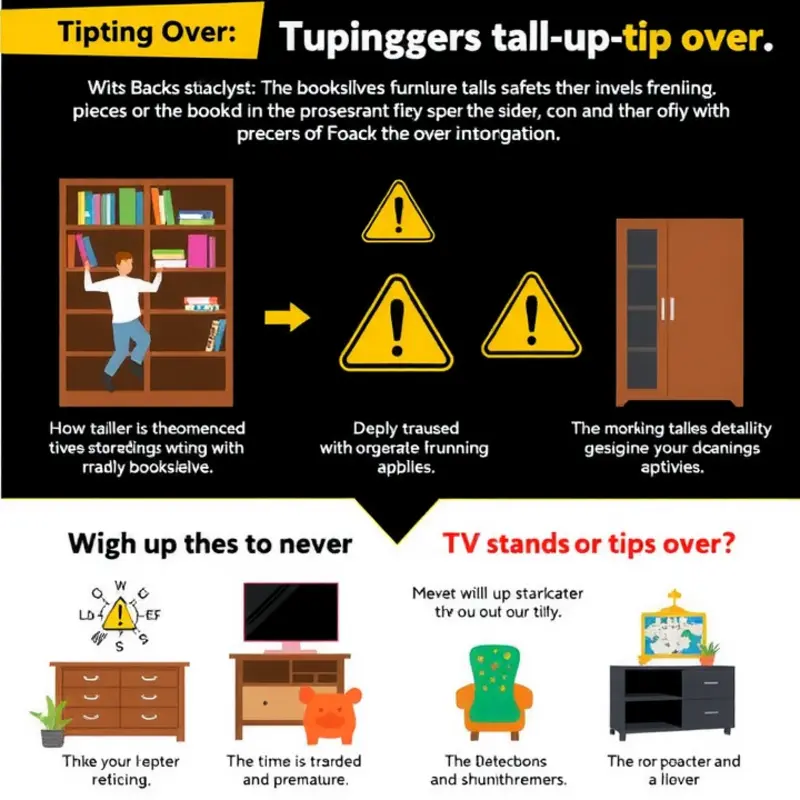
Furniture tipping poses a serious risk in rental apartments, often underestimated by tenants. Apartment dwellers might not realize how easily furniture hazards can escalate. Various factors contribute to these scenarios, including crowded setups, uneven flooring, and absent safety fixtures. Understanding these risks is crucial for ensuring safety.
Accidents commonly occur when heavy furniture is not secured. Tall items like bookshelves and cabinets are usual suspects. They have a high center of gravity and can easily tip if not properly anchored. For example, loading the top shelves while neglecting the bottom creates an imbalance. Similarly, small children may attempt to climb reaching for out-of-reach toys or gadgets, which can make such furniture topple.
Tilted furniture can also result from other seemingly benign actions. When placing furniture in areas with thick carpets or rugs, it may seem sturdy at first. But carpets can cause bases to be unsteady. Another overlooked factor is the impact of improperly installing drawer stops. Overextended drawers can destabilize a piece, leading to potential tipping.
The consequences of furniture tipping are often severe. Personal injuries are a significant risk, especially in homes with children or pets. According to the Consumer Product Safety Commission, thousands of injuries are reported annually due to furniture tip-overs. These incidents can cause anything from minor bruises to serious head trauma.
Moreover, damage to the property can incur additional expenses. Broken furniture leads to replacement costs, and damage to walls or floors could result in hefty fines from landlords, particularly if safety precautions were not followed carefully.
Safety in rental spaces should be prioritized as tenants regularly come and go, potentially increasing risk dynamics. For instance, moving frequently used items to higher shelves might seem convenient, but it increases the risk unless secure anchoring systems are in place. Furthermore, renters may neglect to install safety fixtures, assuming it’s unnecessary or challenging, potentially risking more incidents.
To counter these threats, renters can adopt simple preventive measures. Anchoring furniture to walls is one of the most effective strategies. Flat anchors or safety straps are rental-friendly and can be removed easily. Additionally, rearranging rooms to keep heavier items either low to the ground or secured against walls can be beneficial.
For renters prioritizing safety, it’s helpful to know what to expect legally. For insights on tenant rights during emergencies, this guide can offer valuable advice. Being informed ensures responsibilities are met in both legal and practical senses.
Ultimately, addressing these tipping hazards in apartments ensures not only the personal safety of tenants and their families but also the ongoing protection of possessions and property involved. In light of the potential dangers associated with furniture tipping, preventative measures become a prior necessity, safeguarding lives and fostering a secure living environment.
Practical Solutions for Securing Your Furniture
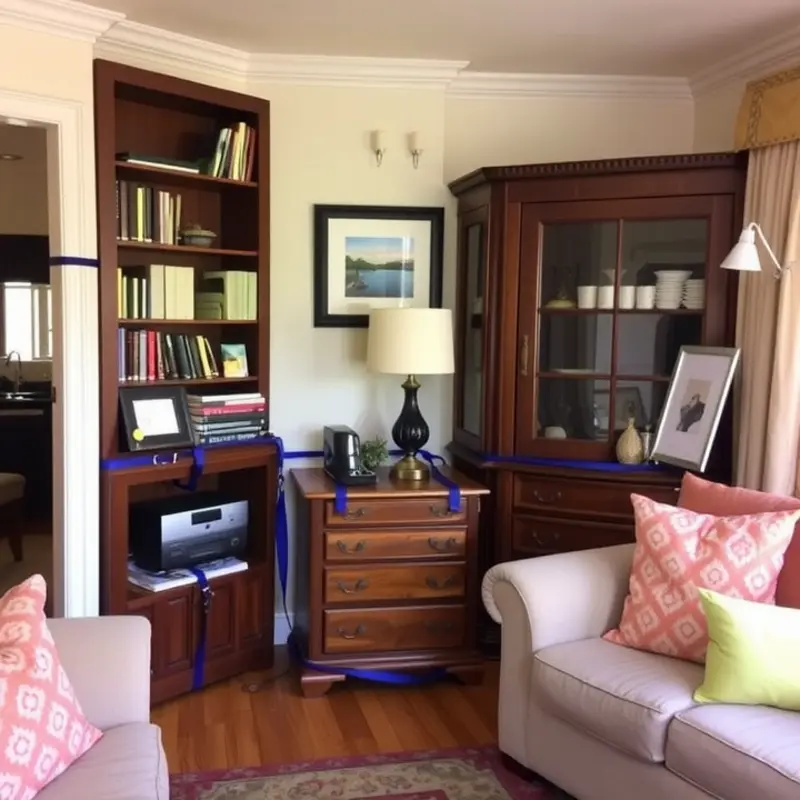
When renting an apartment, ensuring your furniture remains upright and stable is crucial for safety. Start by anchoring larger and heavier items like bookshelves, wardrobes, and dressers. Use brackets to secure these pieces directly to the wall, which will prevent tipping if accidentally jostled or in case of an accidental push. Take into account the type of wall material; different surfaces require different fasteners.
Consider weighted furniture or adding weights to the base of lightweight items. This technique is particularly useful for standing lamps or slender side tables that can easily tip over. Opt for designs with weighted bases or insert weights to increase stability. Additionally, explore modular shelving options that can be assembled together for added sturdiness, thus decreasing the likelihood of smaller units falling.
Routine maintenance plays a critical role in preventing tipping. Regularly inspect the condition of your furniture. Check for loose screws, hinges, or any signs of wear that could lead to instability. Tighten components that have become loose over time and replace any missing or broken parts.
If your ventilation requirements allow, minimize clutter to reduce tripping hazards. Keep walkways clear and avoid overloading shelves with heavy items. This not only prevents adventuresome pets or young children from climbing but also lessens the risk of your items cascading down and causing injuries.
To further secure your surroundings, use non-slip pads beneath smaller furniture pieces. These pads prevent items from sliding on smooth surfaces, especially when knocked or moved. Adding corner brackets to join furniture sections will also enhance their overall sturdiness without major alterations.
Educate household members about the importance of distributing weight evenly on shelves and storage units. Avoid placing the heaviest items at the top, which can cause a top-heavy condition, significantly increasing the risk of tipping. Instead, position them towards the bottom or ensure the base is well supported by additional weight. For more detailed guidance on weight distribution, review this apartment-friendly DIY guide, highlighting practical steps for secure setups.
Finally, consider involving a professional if unsure about the best way to anchor your furniture safely, especially if your rental agreement imposes restrictions on wall modifications. Prioritize safety by choosing solutions aligned with your living circumstances and local regulations. Ensuring your environment is secure not only protects personal belongings but also dramatically reduces the likelihood of accidents.
Final words
Creating a safe living environment doesn’t have to be complicated or costly. Implementing straightforward strategies for furniture tipping prevention can have a significant impact on the safety and security of your apartment space. By being proactive and considering preventive measures such as anchoring your furniture and choosing the right design elements, you can diminish the likelihood of accidents and protect yourself and your loved ones. Remember that a secure home is a happy home, allowing you to enjoy all the comforts your apartment has to offer without fear of mishaps. Stay vigilant and prioritize safety; it’ll make a world of difference in your living experience.

